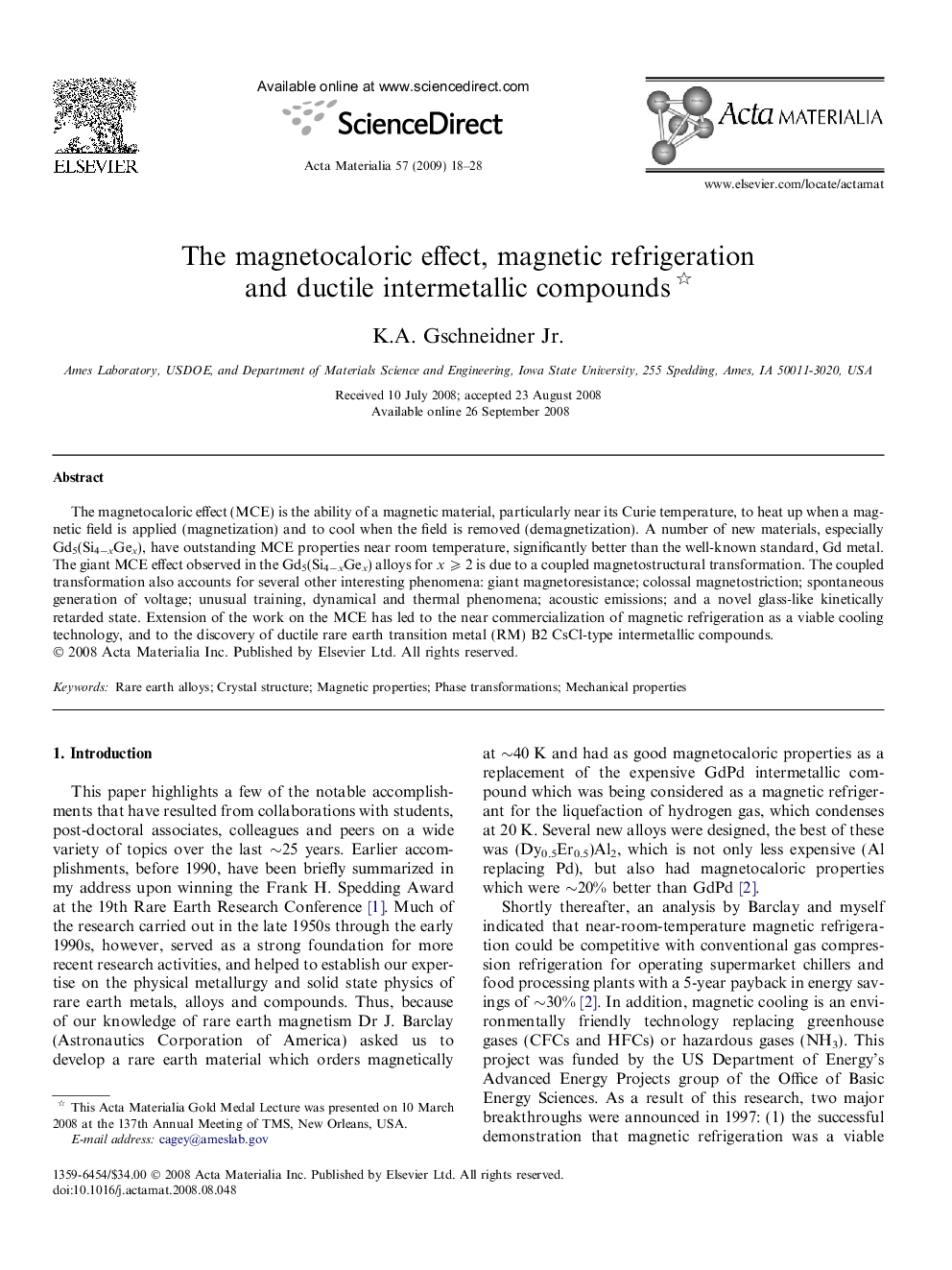| Article ID | Journal | Published Year | Pages | File Type |
|---|---|---|---|---|
| 1448481 | Acta Materialia | 2009 | 11 Pages |
The magnetocaloric effect (MCE) is the ability of a magnetic material, particularly near its Curie temperature, to heat up when a magnetic field is applied (magnetization) and to cool when the field is removed (demagnetization). A number of new materials, especially Gd5(Si4−xGex), have outstanding MCE properties near room temperature, significantly better than the well-known standard, Gd metal. The giant MCE effect observed in the Gd5(Si4−xGex) alloys for x ⩾ 2 is due to a coupled magnetostructural transformation. The coupled transformation also accounts for several other interesting phenomena: giant magnetoresistance; colossal magnetostriction; spontaneous generation of voltage; unusual training, dynamical and thermal phenomena; acoustic emissions; and a novel glass-like kinetically retarded state. Extension of the work on the MCE has led to the near commercialization of magnetic refrigeration as a viable cooling technology, and to the discovery of ductile rare earth transition metal (RM) B2 CsCl-type intermetallic compounds.
